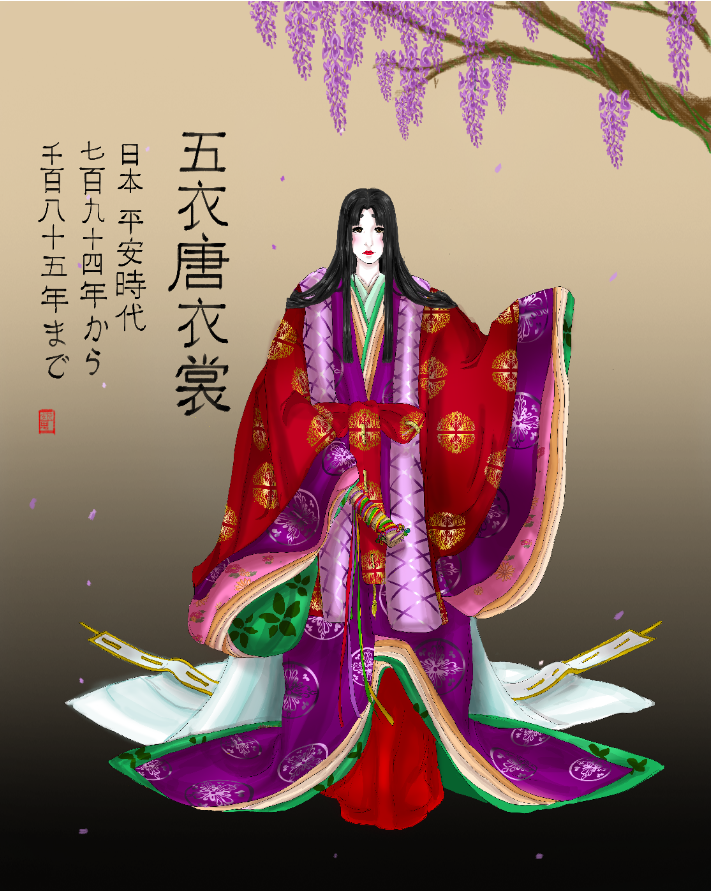
Here is a noble woman wearing a junihitoe (十二単) or twelve layered robe formally called itsutsuginu-karaginu-mo (五衣唐衣裳) first worn during the Heian Period lasting through 794 to 1185. The Heian period was known as the golden age for Japan, and it was during this time that Japan sought to be completely independent from Chinese influence. While they did take influence from china in the white make up and plucked eyebrows of the tang dynasty, the overall aesthetic became distinctly Japanese. This was the most apparent in women’s fashion. The most recognizable feature would first be the heavily layered junihitoe. This garment would consist of twelve kimono-like ropes carefully layered on top of each other in such a way that they would fan out and be splayed beautifully worn on top of a plain white silk robe and long trousers. The Heian court put much importance on color symbolism, so it was important to get the colors of the layers perfect and matching with the feeling of the current season. This different color palettes for these layers was known as kasane no irome (かさね の 色目). It was incredibly important for women to get these color combinations down perfectly lest they me made a laughingstock of the court and possibly even loose ranking (yes, fashion was THAT serious). The Heian court had an eye for the most delicate and subtle color differences that most people could only hope to replicate. It was also fashionable for women to wear their hair loose, and extremely long draping down to the floor. The longest record in the court was reportedly ten feet long! This long hair was also a move to abandon Chinese culture and the elaborate Tang hairstyles. Make up during this period was also highly important. First, they would powder their face with white rice powder, then they would color their lips red with pigment, and sometimes gloss the them with melted sugar. Women would also heavily pluck if not completely shave off their eyebrows and proceed to draw them much higher on either the brow bone or forehead with charcoal. It was also very common for both women and men to blacken their teeth with a charcoal mixture called ohaguro. It was a display of high status as well as a way to hide the yellowing of teeth. The Heian court was beautiful and delicate, but somehow rigorous and stressful at the same time. It would take a very organized and powerful mind to survive navigating this pool of aristocrats.